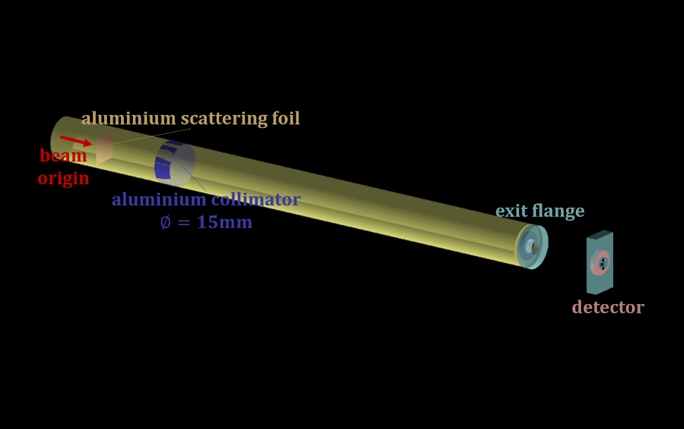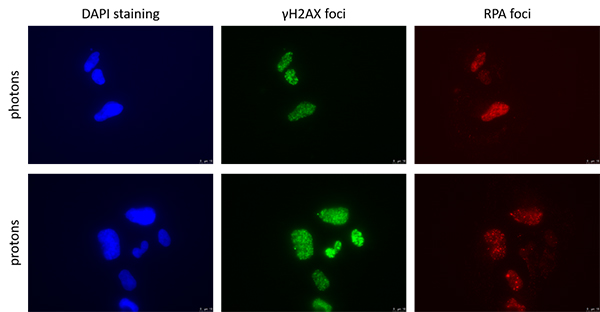Anna Baratto Roldán finishes successfully her PhD

The 25th of November 2020, OMA Fellow Anna Baratto Roldán defended her PhD thesis entitled “Development of an external beam line for radiobiology experiments and microdosimetry applications at the 18 MeV proton cyclotron facility at CNA” at the University of Seville, receiving the special mark of honour “Cum laude”.
The thesis was the result of Anna’s work, as part of the OMA project, at the National Centre of Accelerators – CNA of Seville, and led to the construction of a radiobiology beam line at the cyclotron external beam line installed at the CNA, and to the conduction of the first experiments with cell samples in collaboration with the Centro Andaluz de Biología Molecular y Medicina Regenerativa – CABIMER.

Representative pictures of the cells irradiated at the cyclotron radiobiology beam line and stained for immunofluorescence microscopy analysis
Anna’s thesis was centred around the problem of proton RBE variability in clinical proton therapy, and faced this issue from two different perspectives: (1) experimental, by the design and mounting of a low energy proton facility at the CNA for the experimental measurement of proton RBE in mono-layer cell cultures and (2) computational, by the development of a Monte Carlo application with Geant4-DNA to study the microscopic patterns of energy deposition in water for the computation of microdosimetric quantities, useful for the implementation of variable RBE/LET schemes in proton therapy treatment planning.
After the completion of her thesis, Anna is now continuing her scientific career as a Postdoctoral researcher at the CNA, where new measurements at the radiobiology beam line are foreseen to extend the applications of this facility. In particular, new collaborations have been established to move into the hot topic of flash proton therapy, where the collection of biological data at low proton energies, in correspondence of the Bragg peak region of clinical proton beams, would be extremely useful.
Congratulations!